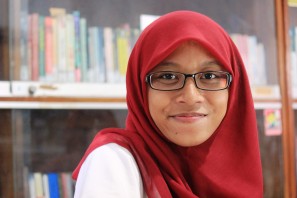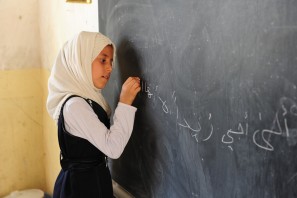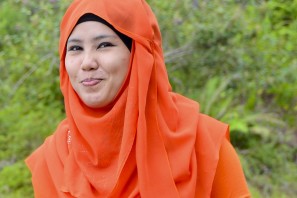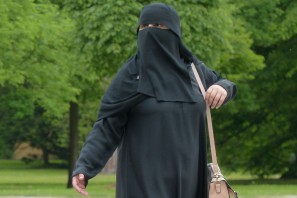About this Collection
What do I want to find out?
Explore the attitudes of pupils towards Muslim women who wear hijab or niqab and towards Islam locally and globally.
What do I need?
- Recording templates, one for each pupil, plus several for your summaries.
- Photographs of a variety of Muslim women wearing a range of head coverings, and some without. Include women of different ethnicities and age. These can be printed or displayed on a whiteboard.
What do I do?
Timing: 30 minutes
- Number the photographs for an easier evaluation of data.
- Show pupils photographs of differently veiled women and ask them to go through each photograph carefully and to write down their impressions of the women in the pictures.
- Remind pupils to number the answers according to the numbers of the pictures.
- Decide whether you want to track results separately from boys and girls, and from Muslim and non-Muslim pupils. If so, keep a record of which responses were generated by which pupils.
- Record responses from all pupils to each woman separately.
- Then ask pupils to write down their responses to each of these questions, for each photograph: How would you describe the woman in the picture? What do you think she’s like? What job do you think she does? Where do you think she lives?
How do I analyse the results?
- Decide what categories you will analyse the results with. Do you want an overview, in which case you might organise their responses into positive and negative? Are you interested in looking for stereotypes or assumptions, or responses by ethnicity or by age?
- Sort out the comments of the pupils according to the categories you have chosen.
- Record whether the pupils perceive each of the veiled and unveiled women differently and whether the difference in the way of covering their heads plays a role in the perception of them by pupils.
- Consider whether pupils perceive women of different ages or ethnicities differently or stereotypically, although they are veiled in a similar way.
How do I measure the change?
- Depending on the time between each audit, you can repeat the activity exactly, or use an alternative set of photos based on the same criteria.
- As an adaptation you could use photographs of women wearing headcoverings for a variety of different reasons to compare the responses. For example, other religions (Christian nuns, orthodox Jews), employment (surgeon, uniform, hygiene), safety (hard hat, motorbike helmet, gas mask), culture (headwrap, national costume), ceremony (a bride, House of Lords), sport (boxing, swimming), weather (sun, rain, cold), fashion (hoodie, scarf) for fun (dressing up, a masked ball, haloween) and so on.
- Look for which aspects of headcovering are seen as negative or positive. For example, whether headcovering for religious reasons is deemed less acceptable than headcovering for safety or employment. Or whether covering the face is only a concern when it is religious and not for a scarf in cold weather.
- Look for a decrease in pupils’ tendency to make generalisations about all Muslim women. Are they more aware of the many different reasons for choosing to wear a veil or headcovering?
- Are pupils better able to criticise the activity itself, are they able to identify stereotypes and challenge the views of others?





